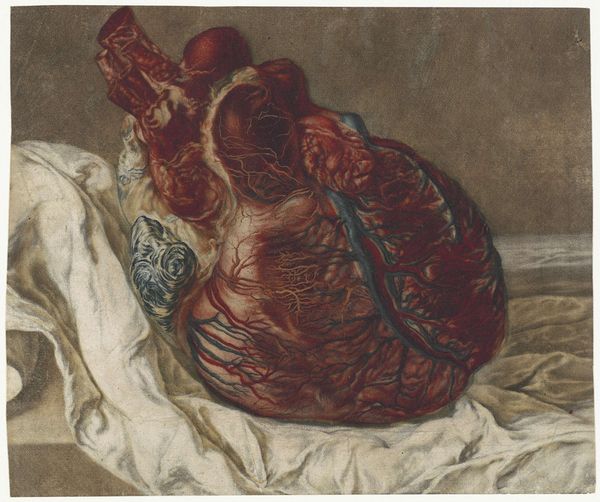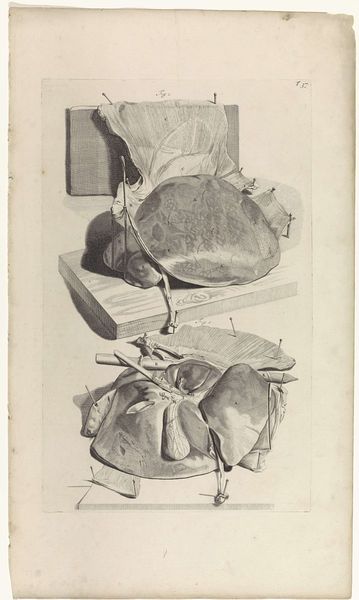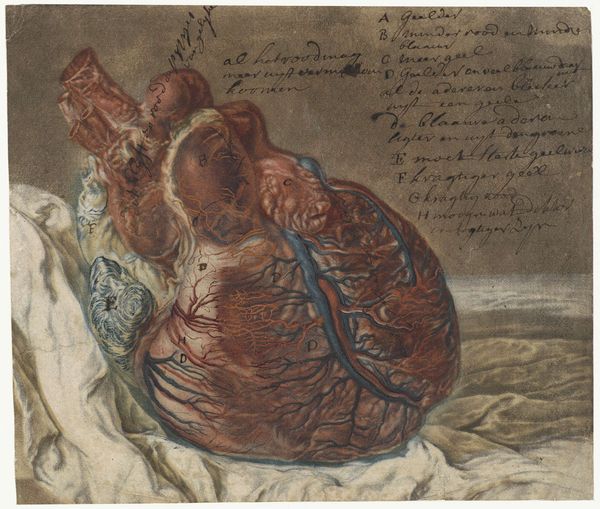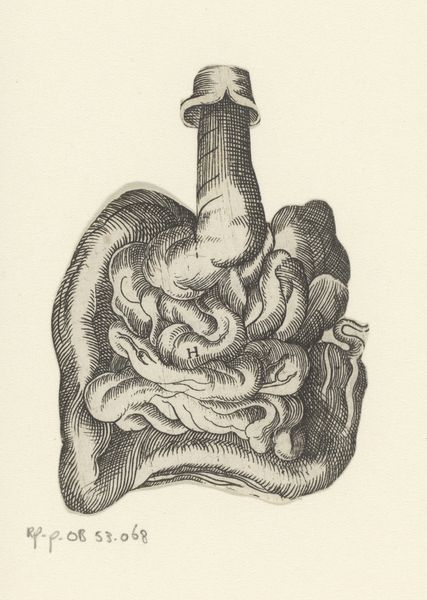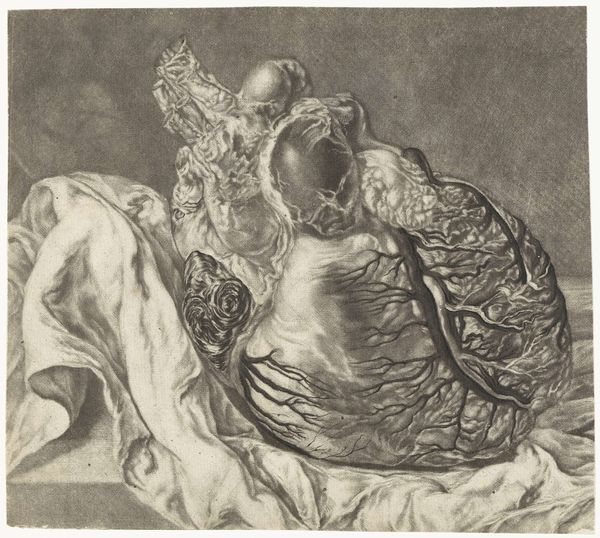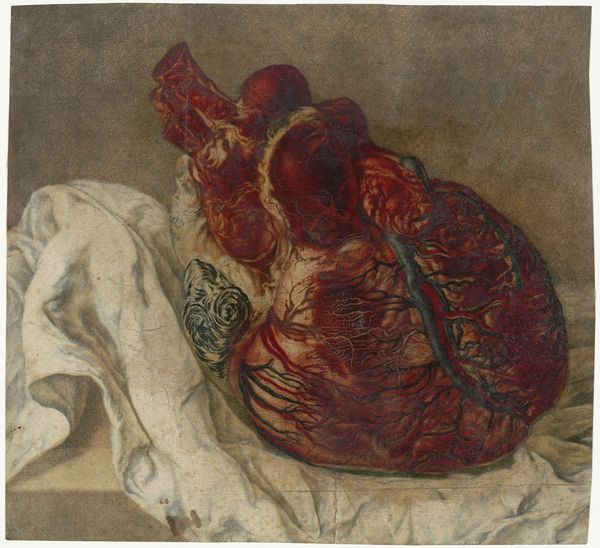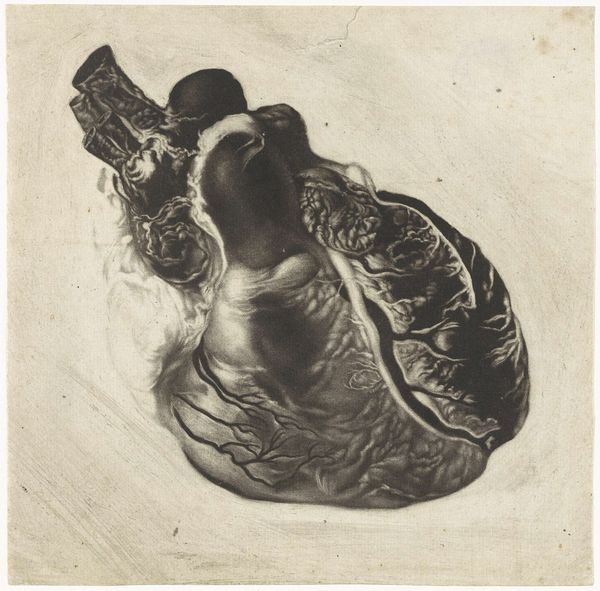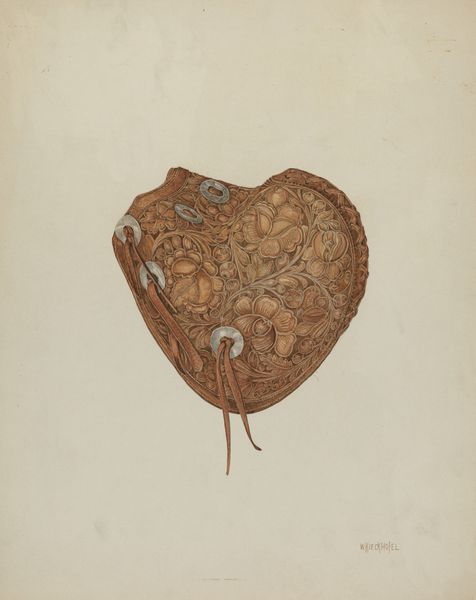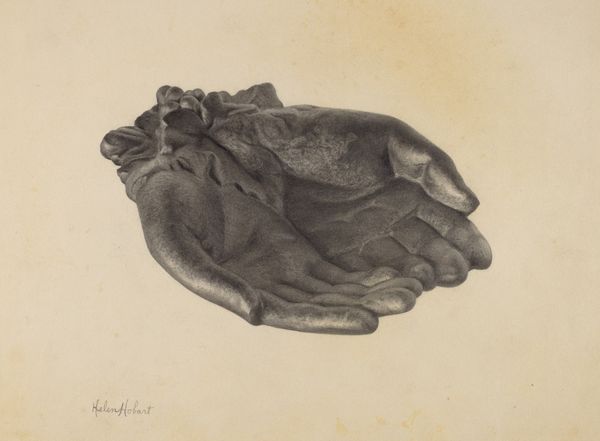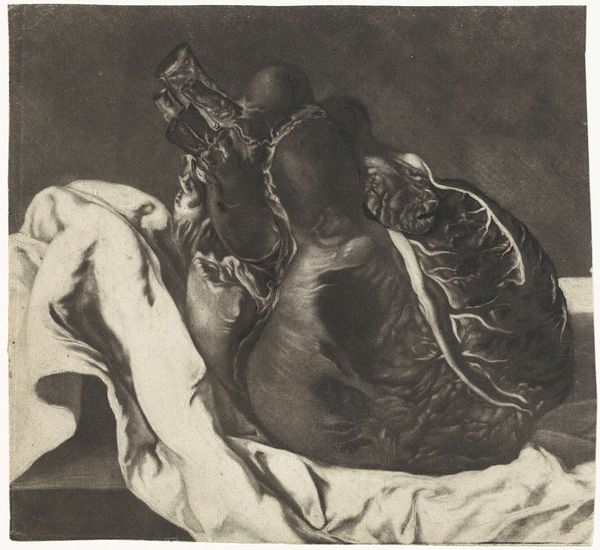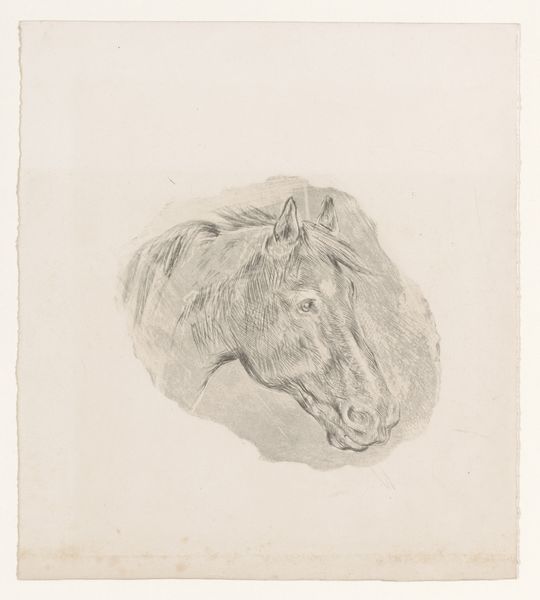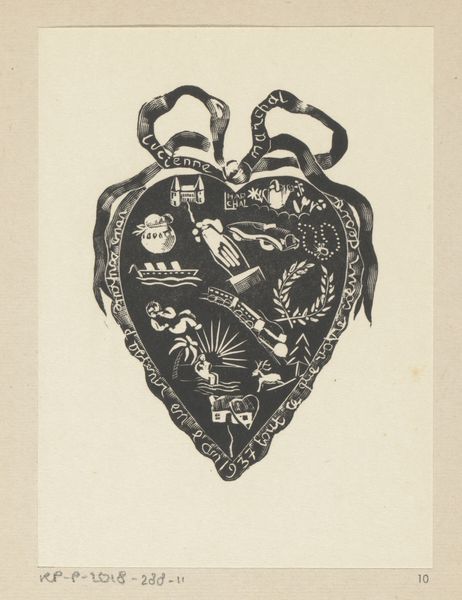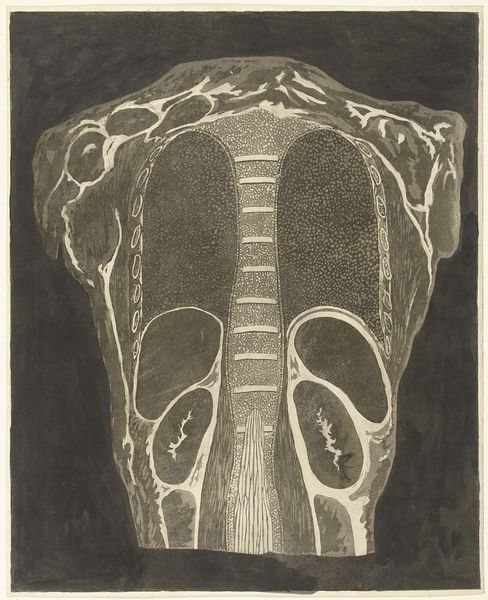
drawing, pencil
#
portrait
#
drawing
#
toned paper
#
pencil sketch
#
11_renaissance
#
pencil drawing
#
pencil
#
history-painting
#
academic-art
#
watercolor
Dimensions: height 191 mm, width 206 mm
Copyright: Rijks Museum: Open Domain
Curator: Let's turn our attention to this arresting anatomical drawing, "Prints of the Brain and the Heart," created between 1700 and 1750 by Jan l' Admiral. Editor: Immediately, I'm struck by its intense yet muted quality, this solitary heart rendered in what looks like pencil and watercolor on toned paper. There's a starkness to the image, isn't there? A quiet examination of the corporeal. Curator: Absolutely. Admiral's work existed in a fascinating era, where detailed observation and recording were integral to the development of scientific knowledge, facilitated by the increasing availability of paper and advancements in printing techniques. The availability of these mediums democratized the circulation of knowledge. Editor: That’s a vital point. Looking at the meticulous lines, the depiction of texture – almost tangible – reminds me how central the heart is to so much symbolism. Historically, it represents not just life, but love, courage, even sorrow. How do you see that playing out here? Curator: Well, beyond the literal representation, it showcases the growing importance of accurate anatomical studies at the time. We often see the heart romanticized; however, here, its presentation is rather unidealized. Pencil drawings such as these served practical purposes, acting as templates and references for medical students. Editor: But there's a subtle artistry at play, nonetheless. The use of the toned paper seems deliberate; it adds depth to the pencil and watercolor work, accentuating the veins and tissues. Curator: Yes, and remember, watercolor, though seemingly delicate, requires meticulous planning and control. The artist had to understand how the pigments would interact, achieving accurate color representation with subtle materials. The materiality emphasizes the dedication that lies within studying the body. Editor: And I’m reminded of the heart’s vulnerability, a softness exposed within a time of burgeoning medical practice. There is something about that delicate quality that stays with me. It prompts questions about mortality, and also what it means to be alive, at any moment in time. Curator: Indeed. And, considered in context with its production and distribution methods, “Prints of the Brain and the Heart” encourages us to think of the intersection between art, labor, and knowledge at the beginning of the 18th century.
Comments
rijksmuseum about 2 years ago
⋮
Around 1735 Jan l’Admiral printed several remarkable anatomical prints in colour, among others on commission for the celebrated physician Frederik Ruysch. For his illustrations of the cerebral membrane (the skull of an unborn child) and a human heart he experimented with ever different colours, and made various versions of them. The objective was to provide medical practitioners with the most precise and realistic images possible.
Join the conversation
Join millions of artists and users on Artera today and experience the ultimate creative platform.
